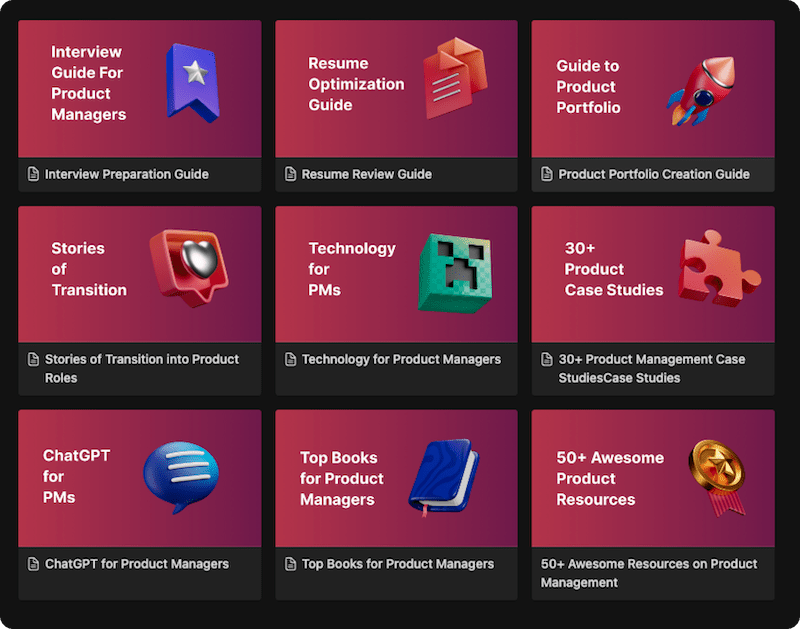You’ve just wrapped up a brilliant brainstorming session. The virtual whiteboard is overflowing with fantastic ideas, your stakeholders are excited, and the potential for your product feels limitless. But now comes the hard part. Your engineering team is asking, “What’s most important?,” your leadership is asking, “When will it be done?,” and you’re faced with a fixed deadline and limited resources. How do you bring order to this chaos and decide what to build now, what can wait, and what to leave behind entirely?
This is the exact challenge that the MoSCoW Prioritization method was designed to solve. It’s a simple, collaborative, and incredibly effective framework that helps teams and stakeholders achieve a shared understanding of what truly matters for a specific release or project.
This guide is designed to make you a master of the MoSCoW method. We’ll break down its four simple categories, give you a step-by-step process for running your own prioritization session, and show you how to use this tool to bring clarity, focus, and alignment to your roadmap.
The acronym MoSCoW stands for:
- M – Must-Have
- S – Should-Have
- C – Could-Have
- W – Won’t-Have (this time)
The lowercase ‘o’s are added simply to make the acronym pronounceable and memorable. To understand the framework, think about building a new house with a fixed budget and move-in date.
- The Must-Haves are the foundation, walls, and roof. Without them, it’s not a functional house.
- The Should-Haves are the finished kitchen and bathrooms. You could technically live there without them, but it would be incredibly difficult and painful.
- The Could-Haves are the landscaped garden and high-end light fixtures. They are wonderful additions that you’ll add if you have the time and budget left over.
- The Won’t-Haves are the swimming pool and home cinema. They are great ideas, but explicitly out of scope for this initial build.
The Origins of MoSCoW: A Trip to the World of DSDM
The MoSCoW method isn’t a recent invention from Silicon Valley. It was developed in 1994 by Dai Clegg, a business analysis and software development expert, while he was working at the tech company Oracle. He created it as a technique to prioritize requirements in time-boxed projects.
The framework was then formalized and popularized within the DSDM (Dynamic Systems Development Method), a project management framework that predates the official Agile Manifesto. Today, DSDM is managed and maintained by the Agile Business Consortium, which stands as the authoritative source on the method’s principles and application. Its endurance is a testament to its simplicity and effectiveness in bringing clarity to complex projects.
The 4 Categories of MoSCoW: A Detailed Breakdown
To use MoSCoW effectively, everyone involved must have a crystal-clear, shared understanding of what each category means.
M – Must-Have
These are the non-negotiable requirements. The product or release is not viable without them. If even one “Must-Have” item is not completed, the entire release is considered a failure.
- The Litmus Test: Ask, “If we launched without this, would the product work? Would it be legal? Would it be safe?” If the answer is no, it’s a Must-Have.
- Example: For a new e-commerce website, a “secure checkout process” is a Must-Have. The site cannot function as intended without it.
S – Should-Have
These requirements are important and add significant value, but they are not critical for the initial launch. Unlike Must-Haves, these have a workaround, even if it’s a bit painful. The release is not a failure without them, but it is significantly less valuable.
- The Litmus Test: Ask, “How badly will the user experience or business value be impacted if we don’t include this? Is there a manual or alternative way to achieve this?”
- Example: For the same e-commerce site, a “password reset feature” is a Should-Have. It’s very important, but if it’s not ready, a user could contact customer support as a temporary workaround.
C – Could-Have
These are the desirable “nice-to-have” features. They have a smaller impact than a Should-Have and will only be included if there is time and resources left after all the Must-Haves and Should-Haves are completed.
- The Litmus Test: Ask, “What is the impact of leaving this out compared to other ‘Should’ and ‘Must’ items?”
- Example: A “dark mode” theme for the e-commerce site is a Could-Have. It’s a great feature that some users will love, but its absence doesn’t affect the core functionality of the site.
W – Won’t-Have (this time)
This is one of the most powerful categories. It’s an explicit list of requirements that have been agreed upon as being out of scope for the current release or timeframe. This isn’t about rejecting ideas forever; it’s about clarifying focus for right now.
- The Litmus Test: Ask, “Does this item fit within our current objective, timeline, and resource constraints?” If not, it’s a Won’t-Have.
- Example: A “customer loyalty program” is a great idea for the e-commerce site, but the team agrees it’s a Won’t-Have for the initial launch to ensure they can focus on the core shopping experience first.
How to Run a MoSCoW Prioritization Workshop: A Step-by-Step Guide
MoSCoW is most effective when used as a collaborative exercise. Here’s how to facilitate a session.
Step 1: Preparation is Key Before the meeting, the facilitator (often the Product Manager or Business Analyst) should define the context. This includes the project’s objective, the specific timeframe (e.g., this quarter, this release), and any known constraints (budget, team size). Gather the list of requirements or features to be prioritized.
Step 2: Get the Right People in the Room Invite a cross-functional group of stakeholders. This must include business representatives (who understand customer value), technical representatives (who understand effort and feasibility), and the project/product lead.
Step 3: The Kick-off: Agree on the Definitions Start the workshop by explaining the MoSCoW categories and agreeing on their definitions as a group. Ensure everyone understands the “litmus test” for a Must-Have. This alignment is crucial to prevent disagreements later.
Step 4: The Categorization Session Go through the list of requirements one by one. Discuss each item and place it into one of the four categories. This should be a negotiation. If there are disagreements (e.g., a stakeholder wants something to be a “Must-Have” that the tech team sees as a “Could-Have”), facilitate a discussion to reach a consensus.
Step 5: Review and Validate Once all items are categorized, review the results. Pay special attention to the Must-Haves. Is the list too long? A common rule of thumb is that Must-Haves should not take up more than 60% of the total effort, leaving a 40% contingency (for the Shoulds and Coulds) to ensure the deadline can be met. If the “Must” list is too large, you may need another round of challenging and re-prioritizing.
MoSCoW in Action: A Real-World Example
Let’s use MoSCoW to prioritize features for the first release of a new mobile banking app. Objective: Launch a secure, functional banking app in 3 months.
Here is a list of potential features the team brainstormed:
- User Login with password
- Biometric Login (Face/Fingerprint ID)
- View Account Balance
- View Transaction History
- Transfer Money Between Accounts
- Pay Bills
- Set Up Recurring Payments
- Personalized Spending Insights
- Dark Mode Theme
- Chat with a Support Agent
- Apply for a Loan
Here’s how the team might categorize them using MoSCoW:
- Must-Haves:
- User Login with password: The app is useless without secure access.
- View Account Balance: This is the most fundamental function of a banking app.
- View Transaction History: Essential for users to understand their finances.
- Transfer Money Between Accounts: A core banking transaction that must be supported.
- Should-Haves:
- Biometric Login: A huge convenience and security improvement, but password login is a viable workaround.
- Pay Bills: A very important feature for user retention, but could be done via the bank’s website as a workaround initially.
- Could-Haves:
- Dark Mode Theme: A “nice-to-have” user preference feature.
- Personalized Spending Insights: Adds delight but is not essential for core banking.
- Chat with a Support Agent: Helpful, but support can be handled via phone/email as a fallback.
- Won’t-Haves (for this release):
- Set Up Recurring Payments: More complex than a one-time bill pay.
- Apply for a Loan: A completely separate, large-scale feature that can be added later.
Common Mistakes to Avoid with the MoSCoW Method
- The “Everything is a Must-have” Trap: Stakeholders often try to label all their desired features as “Musts.” The facilitator must be firm and use the litmus test: “Will the release fail without this?”
- Misunderstanding “Should” vs. “Could”: Teams sometimes struggle with this distinction. The key is the level of pain caused by its absence. A missing “Should-have” is painful; a missing “Could-have” is a minor inconvenience.
- Treating “Won’t-have” as “Never”: Be clear that “Won’t-have” means “won’t have in this specific release or time-box.” This helps stakeholders feel heard and ensures the idea isn’t lost forever.
- Forgetting to Involve the Technical Team: Business stakeholders can’t decide on priorities in a vacuum. The technical team must be present to provide input on effort, dependencies, and risk.
Conclusion: Beyond a Framework, a Conversation Tool
While it presents itself as a simple categorization technique, the MoSCoW method’s true power lies in its ability to force crucial conversations. It creates a shared language for teams and stakeholders, transforming ambiguous wishlists into a clear, agreed-upon plan of action. It replaces arguments with alignment and feature bloat with focus.
By mastering this simple but profound framework, you empower yourself to navigate the complex world of stakeholder demands and resource constraints with confidence. You ensure that your team is always working on what truly matters, delivering maximum value to your users and your business, one release at a time.
FAQ’s
Yes, it is widely considered an Agile technique. It was developed within the DSDM Agile framework and aligns perfectly with Agile principles by promoting collaboration, managing scope within time-boxes (sprints), and ensuring delivery of a viable product.
A MoSCoW session should be a collaborative effort involving a cross-functional team. This typically includes the Product Manager or Project Lead (as facilitator), key business stakeholders who represent the voice of the customer and business needs, and technical team representatives (like a lead developer or architect) who can provide input on feasibility and effort.
The “rules” are the strict definitions of each category: a Must-have is critical for release; a Should-have is important but has a workaround; a Could-have is a bonus if time permits; and a Won’t-have is explicitly out of scope for the current timeframe.
The name MoSCoW is an acronym for its four categories: Must-have, Should-have, Could-have, and Won’t-have. The lowercase ‘o’s were added simply to make the acronym pronounceable and have no other meaning.
The main difference is that RICE is a quantitative method that uses a formula to give features a numerical score, while MoSCoW is a qualitative method that uses team consensus to sort features into categories.
MoSCoW prioritization is a method for managing scope by categorizing requirements into four buckets: Must-have (critical for launch), Should-have (important), Could-have (desirable), and Won’t-have (out of scope for now).
Learn better with active recall quiz
How well do you know What Is MoSCoW Prioritization? Let’s find out with this quick quiz! (just 10 questions)


